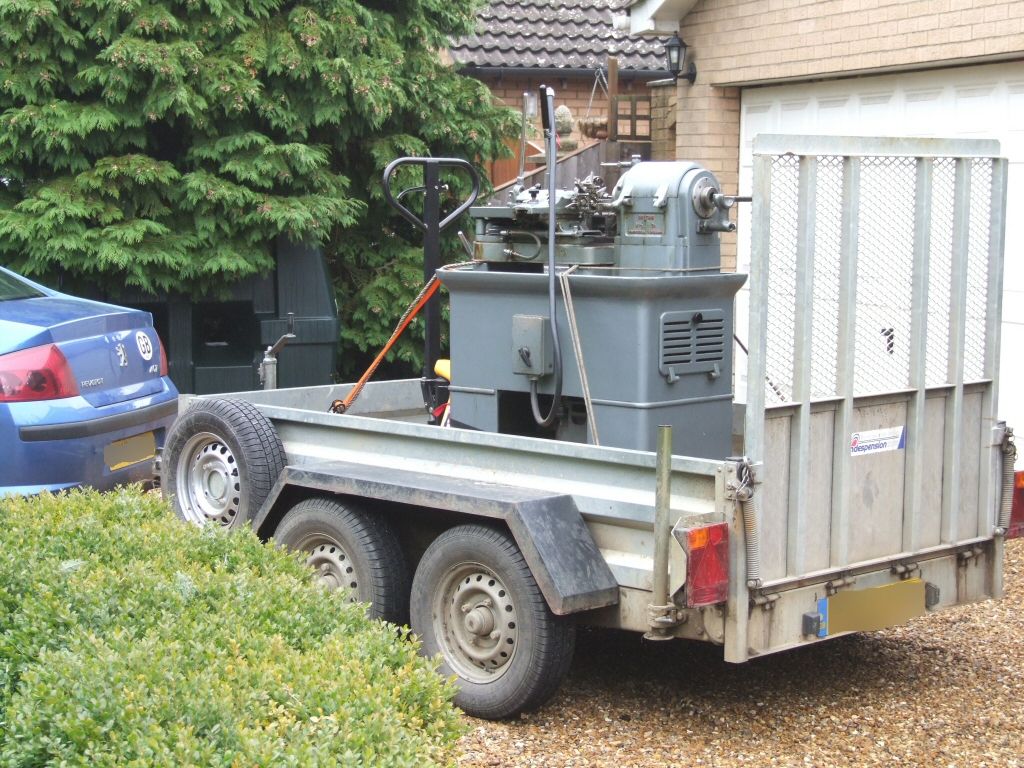Now that I've recovered I can show what I did yesterday, as hinted at in my post yesterday on the 'What did you do today?' thread. What I did was to collect a new lathe with accessories, and some other tooling.
The day started early (for me) with a trip to collect a hire trailer. First hiccup was that the lights on the trailer didn't work, and the number plate wouldn't stay in place. Both problems eventually got fixed by the company I was hiring from. So then back home, by a different route to avoid the A14 morning rush nightmare, to pick up a pallet truck. Then onto the collection point, in a village about 10 miles away, up a series of rather narrow Victorian streets.
It took about 3 hours to get the lathe onto the trailer. The move wasn't far, but it was up a step, through a narrow door and over a sloping gravel drive. I then drove home, slowly as the trailer towed badly. It seemed to hunt quite a bit and the fuel consumption was awful; much worse than my bigger and heavier glider trailer. Here's a picture back home, and mighty relieved I was too to get there:

It took about 2 hours to the get the lathe into the garage. We had a false start as I had asumed that it would be easiest to take the lathe into the house and then back into the garage. However, we couldn't work out how to get the lathe safely over the big step at the front door. Instead we went in via the garage door. We didn't have to move the shaper, which is why I'd originally rejected that way. However, we did have to take all the handles off the surface grinder and then move the grinder back.
Here's the lathe in more or less it's final resting place, off the pallet truck, but still on rollers, as I need to insert the coolant tank and wire up the three phase electrics on the back before finally setting the lathe in position:

The lathe is a Britan repetition lathe, and came with lots of accessories, including round, square and hex collets, a knurling tool, die and tap holders, lots of left hand drills and a couple of nice Coventry dieheads. A lot of the tooling is special to the Britan, so the lathe wouldn't be much use without it. Here's the tooling, the pneumatic bar feeder and a Wolf grinder, angle plate and big V-blocks that I also collected:

I also collected a few Morse taper drills, some small V-blocks and a dinky internal micrometer, as shown here plus some more bits for the Britan, including spare belts, which is good, as I expect that they're now unobtanium:

Once I've got it up and running all I need to do is work out how to use it, and what I'm going to use it for! At least it should make it easier to make all the studs, screws and washers for my traction engines.
Regards,
Andrew
PS: The lathe and grinder were paid for by cheque, so I suppose we can say this is 'cheque book engineering' at its finest. 
Anonymous.









